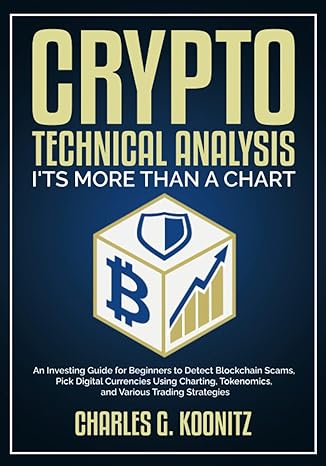Question
Answer the questions that immediately follow the case study. Lam Research Buys Novellus Systems to Consolidate Industry. Highly complex electronic devices such as smartphones and
Answer the questions that immediately follow the case study.
Lam Research Buys Novellus Systems to Consolidate Industry.
Highly complex electronic devices such as smartphones and digital cameras have become ubiquitous in our everyday lives. These devices are powered by sets of instructions encoded on wafers of silicon called semiconductor chips (semiconductors). Consumer and business demands for increasingly sophisticated functionality for smartphones and cloud computing technologies require the ongoing improvement of both the speed and the capability of semiconductors. This, in turn, places huge demands on the makers of equipment used in the chip-manufacturing process.
To stay competitive, makers of equipment used to manufacture semiconductor chips were compelled to increase R&D spending sharply. Chip manufacturers resisted paying higher prices for equipment because their customers, such as PC and cellphone handset makers, were facing declining selling prices for their products. Chip equipment manufacturers were unable to recover the higher R&D spending through increased selling prices. The resulting erosion in profitability due to increasing R&D spending was compounded by the onset of the 20082009 global recession.
The industry responded with increased consolidation in an attempt to cut costs, firm product pricing, and gain access to new technologies. Industry consolidation began among chip manufacturers and later spurred suppliers to combine. In February 2011, chipmaker Texas Instruments bought competitor National Semiconductor for $6.5 billion. Three months later, Applied Materials, the largest semiconductor chip equipment manufacturer, bought Varian Semiconductor Equipment Associates for $4.9 billion to gain access to new technology. On December 21, 2011, Lam Research Corporation (Lam) agreed to buy rival Novellus Systems Inc. (Novellus) for $3.3 billion. Lam anticipates annual cost savings of $100 million by the end of 2013 due to the elimination of overlapping overhead.
under the terms of the deal, Lam agreed to acquire Novellus in a share exchange in which Novellus shareholders would receive 1.125 shares of Lam common stock for each Novellus share. The deal represented a 28% premium over the closing price of Novelluss shares on the day prior to the deals public announcement. At closing, Lam shareholders owned about 51% of the combined firms, with Novellus shareholders controlling the rest.
In comparison to earlier industry buyouts, the purchase seemed like a good deal for Lams shareholders. At 2.3 times Novelluss annual revenue, the purchase price was almost one-half the 4.5 multiple paid by industry leader Applied Materials for Variant in May 2011. The purchase premium paid by Lam was one-half of that paid for comparable transactions between 2006 and 2010. Yet Lam shares closed down 4%, and Novellus shares closed up 28% on the announcement date.
Lam and Novellus produce equipment that works at different stages of the semiconductor-manufacturing process, making their products complementary. After the merger, Lams product line would be considerably broader, covering more of the semiconductor-manufacturing process. Semiconductor-chip manufacturers are inclined to buy equipment from the same supplier due to the likelihood that the equipment will be compatible. Lam also is seeking access to cutting-edge technology and improved efficiency. Technology exchange between the two firms is expected to help the combined firms to develop the equipment necessary to support the next generation of advanced semiconductors.
Customers of the two firms include such chip makers as Intel and Samsung. By selling complementary products, the firms have significant cross-selling opportunities as equipment suppliers to all 10 chip makers globally. Together, Lam and Novellus are able to gain revenue faster than they could individually by packaging their equipment and by developing their technologies in combination to ensure they work together. Lam has greater penetration with Samsung and Novellus with Intel.
Lam also stated on the transaction announcement date that a $1.6 billion share repurchase program would be implemented within 12 months following closing. The buyback allows shareholders to sell some of their shares for cash such that, following completion of the buyback, the deal could resemble a half-stock, half-cash deal, depending on how many shareholders tender their shares during the buyback program. The share repurchase will be funded out of the firms combined cash balances and cash flow. Structuring the deal as an all-stock purchase at closing allows Novellus shareholders to have a tax-free deal.[1]
Discussion Questions:
1. Is this deal a merger or a consolidation from a legal standpoint?
2. Is this deal a horizontal or vertical transaction? What is the significance of this distinction?
3. What are the motives for the deal? Discuss the logic underlying each motive you identify.
4. How are Lam and Novellus similar and how are they different? In what way will their similarities and differences help or hurt the long-term success of the merger?
5. Speculate as to why Lam announced a $1.6 billion share repurchase program at the same time it announced the deal.
6. Do you believe this deal would help or hurt competition among semiconductor chip equipment manufacturers?
Step by Step Solution
There are 3 Steps involved in it
Step: 1

Get Instant Access to Expert-Tailored Solutions
See step-by-step solutions with expert insights and AI powered tools for academic success
Step: 2

Step: 3

Ace Your Homework with AI
Get the answers you need in no time with our AI-driven, step-by-step assistance
Get Started


